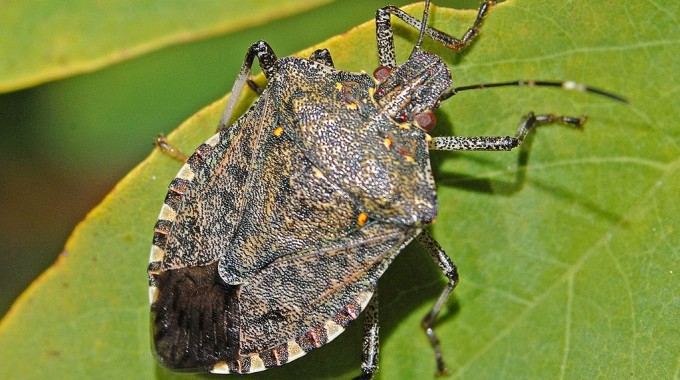
Attention Seafreight Importers – a must read!
Quick quiz:
Do you import via Seafreight?
Do you import from a European country, USA or Canada?
If you answered ‘YES’ to both of these questions, your consignments are likely subject to Brown Marmorated Stink Bug (BMSB) measures in the 2019-2020 season. Please do not disregard this email, the stink bug has expanded across Europe and North America and the upcoming season measures must be met!
In previous seasons some importers have disregarded these notifications, thinking it doesn’t affect them in turn causing delays, extra costs and chance of immediate export (at their own cost).
As an importer it’s important that you educate your suppliers of the measures and ensure you are meeting the import requirements prior to the consignments arrival to help prevent BMSB arrival into Australia and to ensure a smooth import process.
What: For the 2019-2020 BMSB risk season, measures will apply to: • certain goods manufactured in, or shipped from target risk countries, and/or • vessels that berth at, load or tranship from target risk countries
When: From 1 September 2019 and that arrive in Australian territory by 31 May 2020 (inclusive)
Countries: Any target high risk or target risk goods which are manufactured in, or shipped from the target risk countries will be subject to the BMSB seasonal measures. Albania, Canada, Italy, Russia, Andorra, Croatia, Kosovo, Serbia, Armenia, Czech Republic, Liechtenstein, Slovakia, Austria, France, Luxembourg, Slovenia, Azerbaijan, Georgia, Macedonia, Switzerland, Belgium, Germany, Montenegro, Spain, Bosnia and Herzegovina, Greece, Netherlands, Turkey, Bulgaria, Hungary, Romania and United States of America. Japan (heightened vessel surveillance will be the only measures applied)
Target Risk Goods: **Subject to increased onshore intervention through random inspection** Tariff Chapters: 25 – Salt; sulphur; earths and stone; plastering materials, lime and cement 26 – Ores, slag and ash 27 – Mineral fuels, mineral oils and products of their distillation; bituminous substances; mineral waxes 28 – Inorganic chemicals; organic or inorganic compounds of precious metals, of rare-earth metals, of radioactive elements or of isotopes – including sub chapters I, II, III, IV and V 29 – Organic chemicals – including sub chapters I, II, III, IV, V, VI, VII, VIII, IX, X, XII and XIII 31 – Fertilisers 38 – Miscellaneous chemical products 39 – Plastics and articles thereof – including sub chapters I and II 40 – Rubber and articles thereof 46 – Manufacturers of straw, of esparto or of other plaiting materials; basket ware and wickerwork 47 – Pulp of wood or of other fibrous cellulosic material; recovered (waste and scrap) paper or paperboard 48 – Paper and paperboard; articles of paper pulp, of paper or of paperboard 49 – Printed books, newspapers, pictures and other products of the printing industry; manuscripts, typescripts and plans 56 – Wadding, felt and nonwovens; special yarns; twine; cordage, ropes and cables and articles thereof
Target High Risk Goods: **Mandatory Treatment Required** Tariff Chapters: 36 – Explosives; pyrotechnic products; matches; pyrophoric alloys; certain combustible 44 – Wood and articles of wood; wood charcoal 45 – Cork and articles of cork 57 – Carpets and other textile floor coverings 68 – Articles of stone, plaster, cement, asbestos, mica or similar materials 69 – Ceramic products, including sub chapters I and II 70 – Glass and glass ware 72 – Iron and steel, including sub chapters I, II, III, IV 73 – Articles of iron or steel 74 – Copper and articles thereof 75 – Nickel and articles thereof 76 – Aluminum and articles thereof 78 – Lead and articles thereof 79 – Zinc and articles thereof 80 – Tin and articles thereof 81 – Other base metals; cermet’s; articles thereof 82 – Tools, implements, cutlery, spoons and forks, of base metal; parts thereof of base metal 83 – Miscellaneous articles of base metals 84 – Nuclear reactors, boilers, machinery and mechanical appliances; parts thereof 85 – Electrical machinery and equipment and parts thereof; sound recorders and reproducers, television image and sound recorders and reproducers, and parts and accessories of such articles 86 – Railway or tramway locomotives; rolling-stock and parts thereof; railway or tramway track fixtures and fittings and parts thereof; mechanical (including electro-mechanical) traffic signaling equipment of all kinds 87 – Vehicles other than railway or tramway rolling-stock, and parts and accessories thereof 88 – Aircraft, spacecraft, and parts thereof 89 – Ships, boats and floating structures 93 – Arms and ammunition; parts and accessories thereof
Break Bulk Goods: ** Mandatory offshore treatment of target high risk goods – untreated shipments will be denied discharge and be exported as importers cost** Goods shipped in open top containers or on flat rack containers are also considered to be break bulk.
FCL containers (Six Sided Containers): **Mandatory offshore OR onshore treatment of containers which contain target high risk goods at container level** Reefer (operating and non-operating) and high cube hard top sealed containers are classified the same as a six hard sided sealed container. Deconsolidation or removal of goods will not be permitted prior to treatment. No exemptions for deconsolidation or segregation on arrival will be considered by the Department. Consideration must be given to ensure containers are packed in a manner that will enable effective onshore treatment at the container level where required, to avoid possible export of the container.
Containerised goods shipped in Less than Container Load (LCL) consignments and Freight of all Kinds (FAK) containers: **Mandatory offshore treatment is preferred OR onshore treatment allowed at full container level only for containers which contain target high risk goods** Deconsolidation or removal of goods will not be permitted prior to treatment. No exemptions for deconsolidation or segregation on arrival will be considered by the department. Goods which are not subject to BMSB intervention packed in the same container with target high risk goods or target risk goods which require intervention will be subject to the measures. Hubbed LCL and FAK containers will be managed for BMSB risk at the container level as if they have been shipped from a target risk country. This includes if a consignment within the container has a target risk country as the origin shipped country and has been hubbed through a non-target risk country. Deconsolidation of these containers for management at the consignment level will not be permitted.
Random onshore verification inspections: All target high risk and target risk goods will be subject to increased onshore intervention through random verification inspections and will be directed for onshore treatment if BMSB is detected.
Exemptions: New, unused and not field tested (NUFT) goods – The department will permit certain goods manufactured on or after 1 December 2019, and that can meet the full NUFT criteria to be exempt from BMSB measures. Goods classified under tariff chapters 82, 84, 85, 86, 87, 88 and 89 will be accepted under the NUFT criteria as long as they meet certain conditions (further information to follow closer to season).
Approved Treatments: Heat Treatment, Methyl Bromide Fumigation, Sulfuryl Fluoride Fumigation (New rates will be published soon)
Onshore Treatment: List of approved arrangement providers can be found on the department’s website.
Offshore Treatment: List of approved treatment providers can be found on the department’s website. Treatment providers which were registered under the scheme during 2018-19 season must complete the renewal application for the 2019-20 season.
BMSB website & Information: Information above is excerpts only – please review the Department of Agriculture & Water Resources website for full measures. http://www.agriculture.gov.au/import/before/brown-marmorated-stink-bugs

